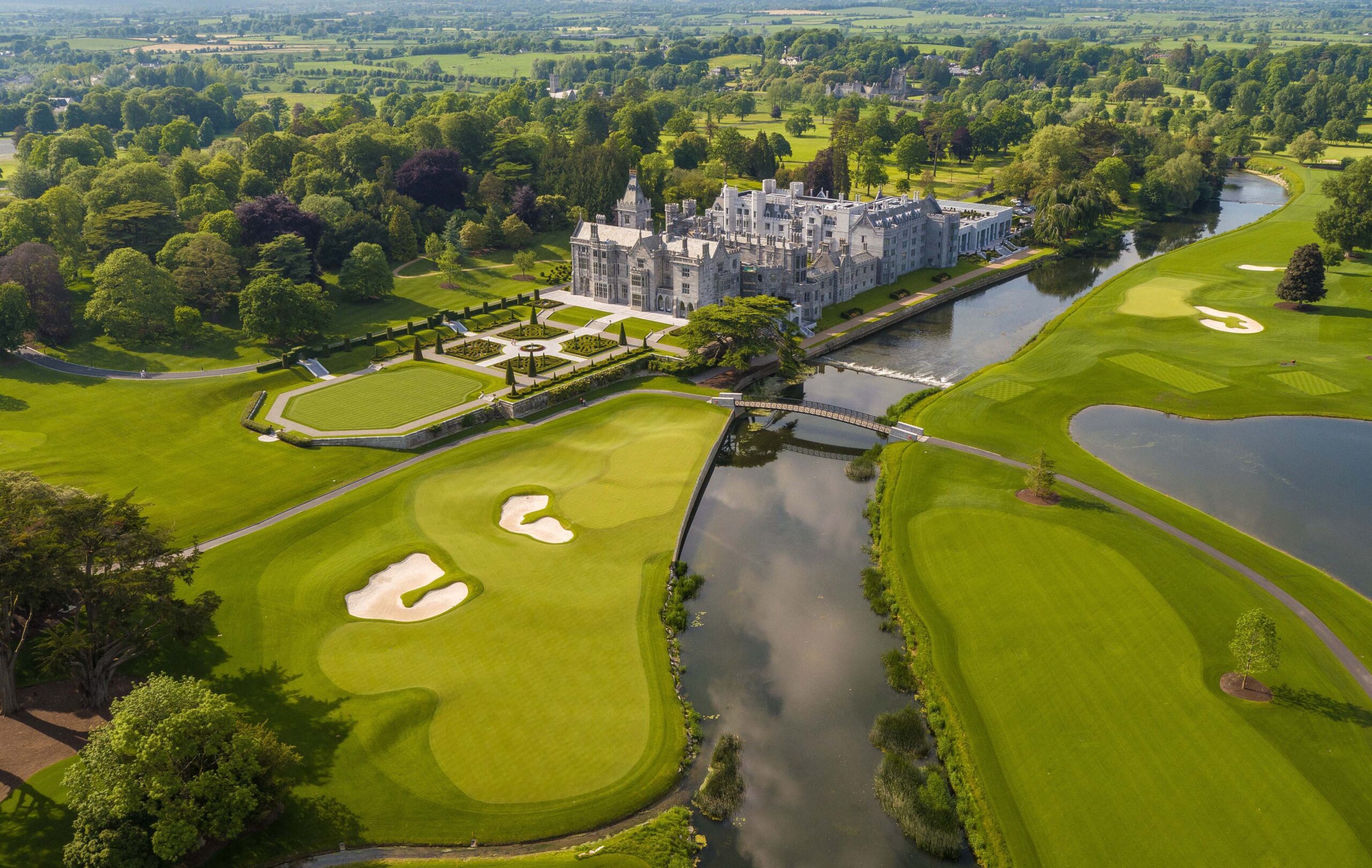Second staging of showpiece a sign of how far we’ve come, writes Dermot Gilleece
independent.ie | 28 July 2019 2:30 AM | Dermot Gilleece
When set against the challenge of landing Tiger Woods for three pro- am events, each 8ve years apart, securing the Ryder Cup seemed a modest objective. Which is probably why it is no surprise that the 2026 biennial showpiece is going to Adare Manor.
Ireland’s second staging of the event is down to the enterprise of JP McManus, who invested in the venue specially with this grand prize in mind. And he is set to deliver the elite players from Europe and the US a very special playground.
“It will be the best conditioned golf course in my experience of this event,” said John Clarkin, managing director of the Irish company, Turfgrass, who are retained as Adare’s agronomists. “All the infrastructure for a successful staging is already in place.”
With plating of 250,000 tonnes of sand on the 18 greens, combined with sub-air beneath, we can be sure that for the first time in history, Irish parkland will not be threatened with disruption from adverse weather.
Clarkin’s company supervised the work of Atlantic Golf Construction from Ballybunion. Explaining that particular of the project, McManus said: “We asked three companies if they would be interested in doing six holes each. Two of them insisted on doing nine holes each, so we gave the 18 holes to the guy who was happy with six”.
No expense was spared in an undertaking costing €50m. This has been spear- headed by the architectural skills of Tom Fazio and his chief designer, Tom Marzolf, who are regarded among the best in their craft.
Though the event is still seven years away, Ireland is already a very different place than it was when the idea of staging the Ryder Cup was first mooted. This goes back to 1989 when, in the wake of a memorable drawn match at The Belfry, a list of 10 applicants was announced for the next European staging in 1993.
By country, those venues were Royal Troon, Turnberry and Carnoustie from Scotland; Royal Birkdale, Wentworth, St Mellion and The Belfry from England and Portmarnock, Ballybunion and the ‘County Kildare Club’ from Ireland. In keeping with the wishes of the outgoing captain, Tony Jacklin, it was further announced that an 11th application was expected from Spain, probably involving Las Brisas or Valderrama.
The embryonic K Club, which was then under construction, was simply putting down a marker. So the Irish bid effectively rested with Portmarnock which eventually lost out to The Belfry on the casting vote of Lord Derby, chairman of the PGA.
It would be a further 13 years before Irish ambitions were realised. This came through a process involving the government as the main bidder. With Pádraig Ó hUiginn as the chief negotiator, a payment of IR£7.5m was agreed, though this was only part of the overall deal.
Additional assurances involved the staging of extra tournaments. In 2002, for instance, there was the Seve Trophy, Irish Senior Open (at Adare Manor), Irish Open, European Open and the North-West Open. Then, before The K Club became the successful venue, there were assurances of a further 10 staging’s of the European Open.
It’s all very different now. At the official launch in Adare of the restructured course 15 months ago, there was already a feeling of confidence about the prospect of landing the 2026 Ryder Cup, simply because of McManus at the helm.
Though Keith Pelley, chief executive of the European Tour, attempted to remain suitably business like about matters, he enthused: “The golf course is an absolute masterpiece. Truly remarkable. The condition is impeccable and the design is as good as I’ve seen.” So, if the venue was to be found wanting, it would have to be for a reason not yet apparent to us.
All of which is reactive of Ireland as a far more confident place than it had been for those earlier Ryder Cup applications. Individual victories at the highest level have seen to that, with our haul of Major triumphs being increased from Fred Daly’s lone Open success of 1947, to the current 11 after Shane Lowry’s win last Sunday.
Then there has been the authority projected by Paul McGinley as a triumphant Ryder Cup skipper in 2014. And the status of the much-admired Pádraig Harrington as Europe’s captain for next year at Whistling Straits.
These are heady times for Irish golf. Pity that McManus’s friend, El Tigre, won’t be challenging for a Ryder Cup place seven years from now. Mind you, he can’t be discounted as a particularly interesting American captain.

